Black & Gay In A Racist, Homophobic World
Navigating the Minefield: Being Black and Gay in a Hostile World
Author & columnist, featured on HBO, NPR, and in The New York Times
Consider the gravity of walking a tightrope, suspended over a treacherous landscape of prejudice, with the burdens of both racism and homophobia threatening to topple you. For black, gay men, this image encapsulates their daily reality.
Confronted with judgment and rejection from their own community because of their sexual orientation, they seek refuge within the LGBTQ+ community, only to be met with racism in spaces that should have offered solace and support.
A Collision of Struggles: Historical Context
Delving into the historical context of the unique intersection of race and sexual orientation is vital for understanding the present-day experiences of black, gay men.
This expanded exploration will examine key events and movements, such as the civil rights movement, the early LGBTQ+ rights movement, and the emergence of intersectionality as a concept.
The Civil Rights Movement: A Missed Opportunity
The civil rights movement, which spanned from the mid-1950s to the late 1960s, aimed to end racial segregation and discrimination against African Americans. While it achieved notable successes, such as the Civil Rights Act of 1964 and the Voting Rights Act of 1965, it fell short in addressing the unique challenges faced by black, gay men.
The movement's leaders, predominantly heterosexual black men, often neglected to include the voices of black, gay men in their fight for equality. Bayard Rustin, a key advisor to Dr. Martin Luther King Jr. and the chief organizer of the 1963 March on Washington, was an openly gay man.
Despite his invaluable contributions to the movement, Rustin was forced to remain in the background, as his homosexuality was seen as a liability. The lack of recognition and inclusion of black, gay men in the civil rights movement left them on the periphery, struggling to navigate the intersection of race and sexual orientation.
Support Black Businesses. Click here for black-owned beauty products, clothing stores and more.
The Early LGBTQ+ Rights Movement: A White, Middle-Class Affair
Parallel to the civil rights movement, the early LGBTQ+ rights movement emerged in the late 1960s, most notably with the Stonewall Riots in 1969. However, the movement's focus was primarily on the rights and concerns of white, middle-class individuals.
The marginalization of people of color within the movement led to a sense of alienation for black, gay men.
Prominent black, gay figures, such as Marsha P. Johnson and Sylvia Rivera, played vital roles in the early days of the LGBTQ+ rights movement. Still, their contributions were often overshadowed by the more "palatable" white, middle-class activists.
The exclusion of black, gay men from the mainstream LGBTQ+ movement further emphasized the need for a more intersectional approach.
Enter Intersectionality: A Framework for Understanding
The concept of intersectionality, first coined by scholar and civil rights advocate Kimberlé Crenshaw in 1989, provided a much-needed framework for understanding the overlapping and interconnected nature of different forms of discrimination.
Intersectionality acknowledges that the experiences of black, gay men cannot be understood by examining race and sexual orientation in isolation. Instead, their experiences are shaped by the ways in which these identities intersect and amplify each other.
For black, gay men, intersectionality provides a tool for articulating the unique challenges they face, such as the double discrimination of racism and homophobia, and the often-competing demands of loyalty to the black and LGBTQ+ communities.
The emergence of intersectionality as a concept marked a turning point in the recognition and understanding of the distinct experiences of black, gay men.
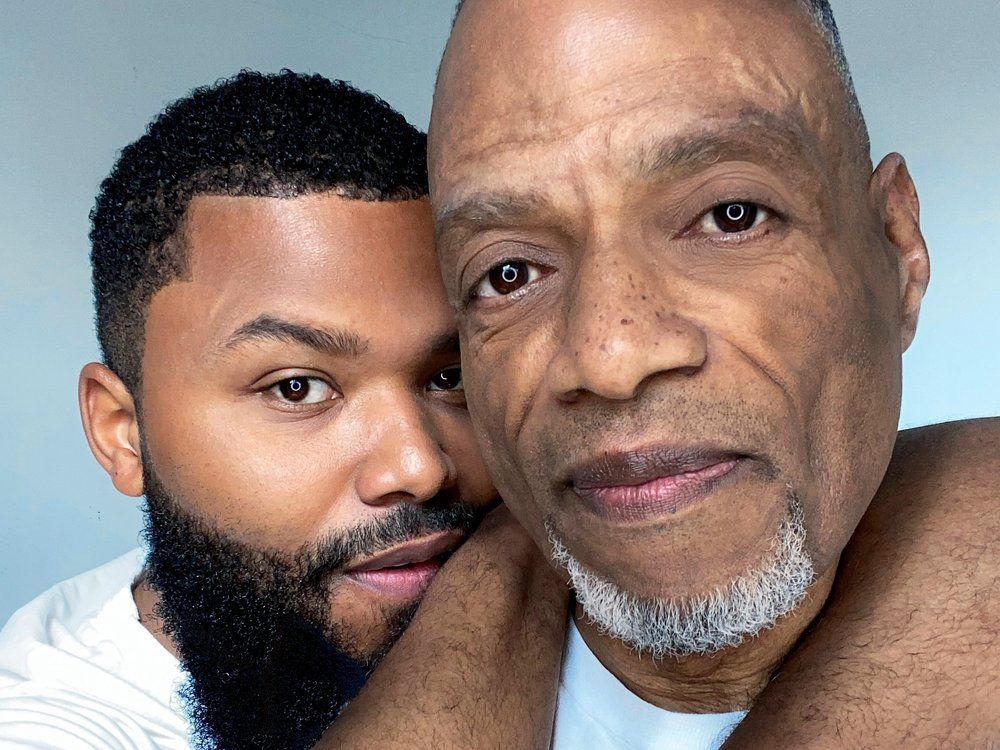
The Impact of the "Don't Ask, Don't Tell" Policy
In 1993, the United States military implemented the "Don't Ask, Don't Tell" (DADT) policy, which prohibited openly gay, lesbian, and bisexual individuals from serving in the military.
While this policy affected all LGBTQ+ service members, it had a particularly profound impact on black, gay men. Military service has long been a pathway to social mobility and economic stability for many black Americans.
The DADT policy forced black, gay service members to choose between their sexual orientation and their military careers, exacerbating the already difficult navigation of their intersecting identities.
James Baldwin: A Trailblazer for Black, Gay Men
James Baldwin, the celebrated black, gay author and social critic, broke barriers by openly discussing his sexual orientation in his work during the 1950s and 60s.
As a trailblazer for black, gay men, Baldwin's writings, such as "Giovanni's Room" (1956) and "Another Country" (1962), explored themes of race, sexuality, and identity, giving voice to the unique struggles faced by individuals at the intersection of these identities.
Baldwin's work was met with both praise and criticism. In the black community, he faced backlash for his frank discussions of homosexuality, which were seen as a distraction from the more pressing issue of racial equality. Conversely, within the predominantly white literary community, he encountered racism and marginalization.
Despite these challenges, Baldwin's courage in discussing his experiences as a black, gay man inspired and paved the way for future generations. His work has become a touchstone for those seeking to understand and empathize with the experiences of black, gay men in a racist, homophobic society.
Audre Lorde: A Voice for Intersectional Feminism
While not a black, gay man, Audre Lorde's contributions as a black, lesbian feminist and activist are worth noting. Lorde's work emphasized the need for an intersectional approach to activism, recognizing that the experiences of black, LGBTQ+ individuals could not be separated from their racial and gender identities.
Her writings, such as "Sister Outsider" (1984), offered powerful insights into the lived experiences of black, LGBTQ+ individuals and the importance of acknowledging their unique struggles.
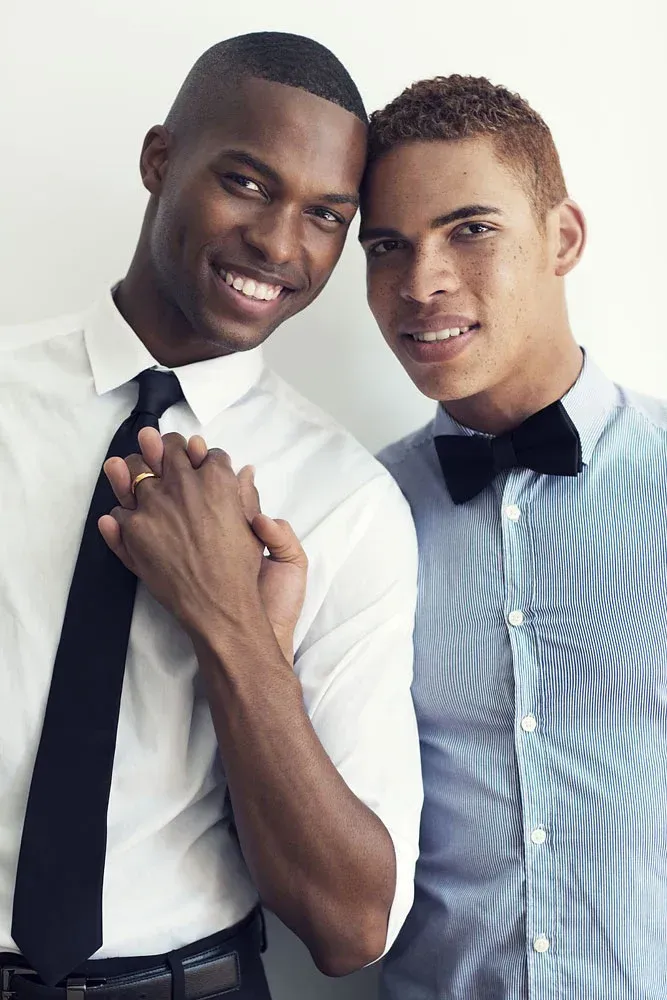
The Emergence of Black Gay Pride
In response to the marginalization experienced by black, LGBTQ+ individuals within mainstream pride events, the first Black Gay Pride event was held in Washington, D.C. in 1991.
This event aimed to create a space where black, LGBTQ+ individuals could celebrate their intersecting identities and foster a sense of community and solidarity.
Since its inception, Black Gay Pride has grown into a national movement, with events held annually in cities across the United States. These events provide an opportunity for black, gay men to connect with others who share their experiences and offer a platform for discussing the unique challenges they face.
The Role of the Black Church
The Black Church has long been a pillar of the African American community, providing support and a sense of belonging for generations. However, the Church's teachings on homosexuality have often been a source of tension and conflict for black, gay men. Many have been ostracized or forced to hide their true selves to maintain their connection with their faith and community.
This tension has led some black, gay men to seek out more inclusive religious communities, such as the Unity Fellowship Church Movement, founded by Reverend Carl Bean in 1982.
This movement emphasizes the importance of love, acceptance, and inclusivity, providing a spiritual home for black, LGBTQ+ individuals who have felt unwelcome in more traditional religious settings.
When Home is a Battlefield
Meet "Darnell," a young man who knows all too well the pain of rejection from his own community. Raised in a devoutly religious household, Darnell was taught that homosexuality was a sin, and he grappled with feelings of guilt and shame.
When he finally mustered the courage to come out to his family, the response was heartbreaking. His mother said, "You're an abomination, and I can't have a faggot for a son!" Darnell was left feeling isolated, crushed by the very people he had sought love and acceptance from.
In another instance, "Jerome" recalled a time when he was walking home from school, hand in hand with his boyfriend, when a group of black peers hurled slurs at them.
"Look at those gay-ass n*****s!" one shouted. Jerome and his boyfriend were left feeling exposed, humiliated, and angry at their own community's intolerance.
For black, gay men, acceptance within their own communities can feel like walking through a minefield. It's a tangled web of family, cultural expectations, and religious beliefs that they must carefully navigate. Let's dive into some of the challenges they face in their quest for acceptance and understanding.
Family: Where Love and Acceptance Should Start
We all know family should be the foundation of love and support in our lives. But for black, gay men, family dynamics can be a rollercoaster of acceptance and rejection.
Some families wrap their black, gay members in a warm embrace, offering unconditional love. Others, not so much, thanks to cultural, religious, or societal beliefs.
Take "Tyrese," for example. When he came out to his parents, his mom showered him with love and support. But his dad? He couldn't handle the news. He refused to accept Tyrese's sexual orientation and avoided discussing it. Tyrese felt like he lost his father's love and respect, and that's a tough pill to swallow.
The Weight of Cultural Expectations
In many black communities, there's a strong emphasis on traditional gender roles and expectations. For black, gay men, this can feel like carrying the weight of the world on their shoulders. When they don't fit the mold, it can lead to feelings of isolation and rejection.
"Marcus" knows this all too well. Growing up, he was expected to be the tough, masculine guy who played sports and chased girls.
But that wasn't him. When he finally came out, he faced ridicule from his peers and a never-ending battle to prove his "blackness" to others in his community.
Religion: A Double-Edged Sword
Faith can be a powerful force for good, offering hope and guidance in times of need. But when it comes to being black and gay, religion can also be a double-edged sword.
Many black communities are deeply religious, and traditional beliefs about homosexuality can create a hostile environment for black, gay men.
"Jerome" found himself caught in the crossfire when he came out to his devoutly religious family. They saw his sexual orientation as a sin, and he was told he needed to "pray the gay away." The very people who were supposed to love and support him turned their backs on him, all because of their religious beliefs.
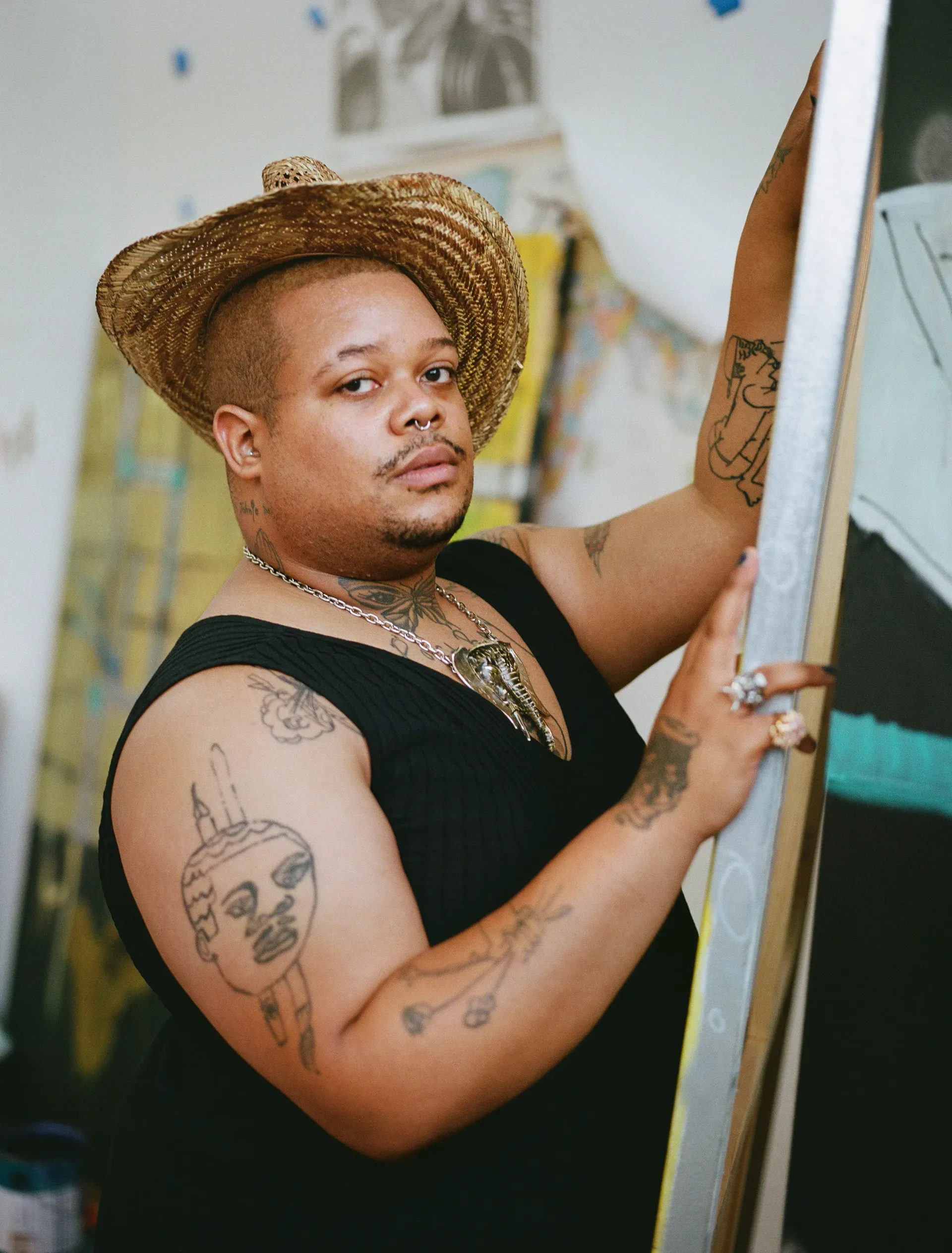
Racism Within the LGBTQ+ Community
The gay community, often regarded as a refuge for those cast out by mainstream society, isn't without its own share of discrimination. "Marcus" shared his experience of attending a gay bar, hoping to find camaraderie and support.
Instead, he was greeted by a white patron who snidely remarked, "I didn't know they let darkies in here." The blatant racism left Marcus feeling alienated, bewildered, and hurt. This was supposed to be a safe space, and yet he was met with hostility.
In online dating, "Terrence" encountered profiles that declared "no blacks, no fems." The exclusionary nature of these messages left him feeling devalued and unwanted, simply because of his race and sexual orientation.
The very community that was meant to embrace diversity and inclusivity often perpetuated the same prejudices he sought to escape.
The Strains of Intersectional Discrimination
Living at the intersection of racism and homophobia is not for the faint of heart. "Michael" described his experience as a black, gay man as akin to walking through a minefield, constantly on edge and fearing when the next explosive encounter might occur.
"You're never really safe," he explained. "It's like you have to be on guard all the time, because you never know when someone will hurl a racist or homophobic slur at you." This constant state of vigilance takes a toll on mental health and overall well-being.
Racism Within the LGBTQ+ Community: When Rainbow Colors Fade to Black and White
You'd think the LGBTQ+ community would be a safe space for all, right? A place where people of all colors, shapes, and sizes come together in the name of love and acceptance.
Well, not always. Even within this diverse community, racism can rear its ugly head, making life for black, gay men feel like they're stuck between a rock and a hard place.
The Dating Scene: Swipe Left on Racism
When it comes to dating, black, gay men often find themselves facing a whole new level of discrimination. Dating apps, which should be a playground for love and connection, can quickly turn into a nightmare of racist remarks and exclusion.
"Anthony" was excited to jump into the dating pool after coming out. But instead of finding love, he found a bunch of profiles with statements like "No Blacks" or "Not into chocolate." Ouch. It's hard enough to put yourself out there, but dealing with that kind of blatant racism is a whole other level of hurt.
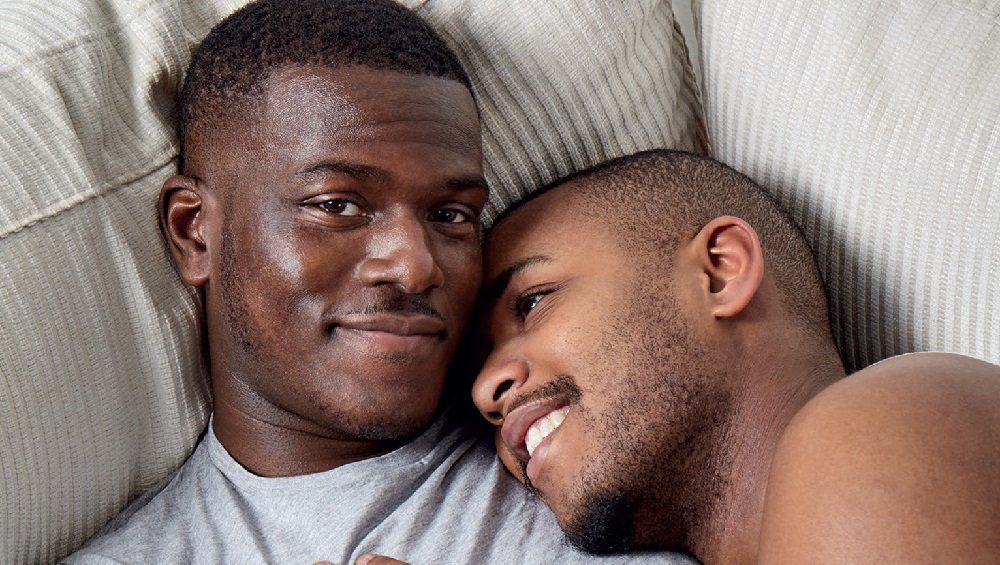
The Fetishization of Black Bodies
On the flip side, some black, gay men find themselves being objectified and fetishized because of their race. Instead of being seen as individuals with their own unique qualities and interests, they're reduced to stereotypes or exotic "flavors" to be sampled.
"Jamal" had his share of encounters with guys who were only interested in him because of his race. He was tired of hearing comments like "I've never been with a black guy before" or "I love your BBC." It's dehumanizing and a constant reminder that even within the LGBTQ+ community, race can still be a barrier to true connection.
Exclusion from LGBTQ+ Spaces and Events
For black, gay men seeking solace and community in LGBTQ+ spaces, the reality can be a harsh wake-up call. Whether it's being turned away at the door of a gay club or feeling unwelcome at pride events, racism within the LGBTQ+ community can create a sense of isolation and frustration.
"Darnell" experienced this firsthand when he was denied entry to a popular gay club. The bouncer claimed it was due to a dress code violation, but Darnell couldn't help but notice the white patrons being allowed in wearing similar attire. It was a stark reminder that even within the LGBTQ+ community, not all are treated equally.
Lack of Representation in LGBTQ+ Media
Representation matters, and for black, gay men, it can feel like they're invisible in LGBTQ+ media. From movies and TV shows to magazines and advertisements, the lack of diverse representation sends a clear message: You don't belong here.
"Rashad" felt the sting of underrepresentation when he searched for stories and characters he could relate to in LGBTQ+ media. Time and time again, he was met with a sea of white faces and stories that didn't reflect his own experiences. It was a disheartening reminder that even in a community that prides itself on inclusivity, some voices are still silenced.
The Ripple Effects on Mental Health
The psychological burden of dealing with intersectional discrimination can be immense. "Jamal" recounted his experience with depression and anxiety, which he attributed in part to the stresses of navigating a world that seemed intent on rejecting him at every turn.
He said, "You feel like you don't fit in anywhere. It's like you're a puzzle piece that just doesn't belong to any puzzle, and it can really mess with your head."
Even in the face of adversity, black, gay men have demonstrated incredible resilience. "Kwame," who experienced bullying and marginalization throughout his life, found solace in a support group for black, LGBTQ+ individuals.
The group provided a space for him to share his experiences, learn coping strategies, and forge connections with others who understood his struggles.
Living as a black, gay man in a society that's often both racist and homophobic can take a massive toll on mental health.
It's like constantly trying to keep your head above water while the waves of discrimination and prejudice threaten to pull you under. Let's explore the many ways these struggles impact the mental well-being of black, gay men and how they manage to stay afloat in these turbulent waters.
The Weight of Double Discrimination: When Two Worlds Collide
Dealing with discrimination based on race or sexual orientation is challenging enough on its own. But when you're black and gay, you're hit with a double whammy that can make life feel like an uphill battle.
"Leon" experienced the crushing weight of double discrimination when he was denied a job promotion because of his race and sexual orientation. He was left feeling helpless, angry, and defeated.
The constant stress of battling these two forms of discrimination took a significant toll on his mental health, leaving him feeling overwhelmed and anxious.
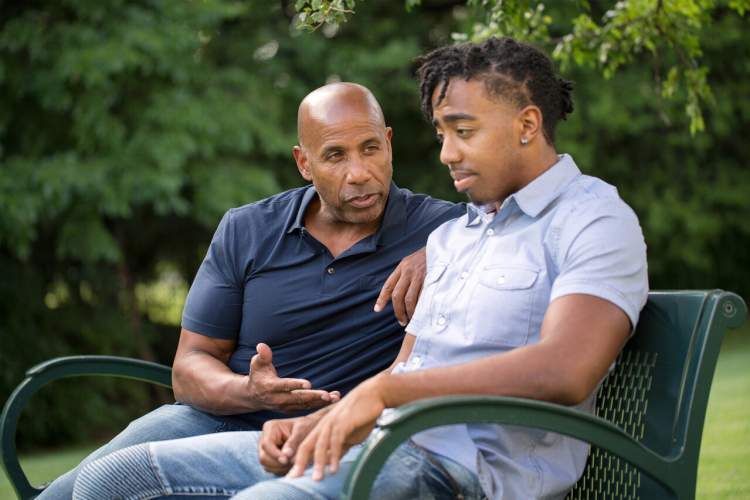
The Mental Strain of Concealment: Hiding in the Shadows
For some black, gay men, the fear of discrimination leads them to hide their true selves from the world. The pressure to conceal their sexual orientation from family, friends, and coworkers can be mentally exhausting, creating a sense of isolation and loneliness.
"Darren" spent years hiding his sexual orientation from his family, fearing their reaction. The burden of living a double life took a massive toll on his mental health, leading to depression and anxiety. He felt trapped in a never-ending cycle of fear and self-doubt, unable to break free from the shadows of his own life.
Internalized Racism and Homophobia: When the Enemy is Within
Sometimes the most significant battles black, gay men face are the ones within themselves. Growing up in a society that perpetuates racist and homophobic beliefs can lead to internalized racism and homophobia, causing feelings of self-hatred and unworthiness.
"Eric" struggled with internalized homophobia throughout his life. He grew up in a religious household that taught him being gay was a sin.
Even after coming out and finding acceptance within the LGBTQ+ community, he couldn't shake the feelings of shame and guilt that had been ingrained in him since childhood.
This internal battle wreaked havoc on his mental health, making it difficult for him to find happiness and self-love.
The Impact of Rejection on Mental Health: When Love Turns to Loss
Rejection from family, friends, and the community can be a crushing blow for black, gay men. The loss of love and support can lead to feelings of abandonment, depression, and even suicidal thoughts.
"Michael" felt the full force of rejection when he came out to his family. They couldn't accept his sexual orientation, and he was shunned by the people he loved most. The pain of losing his family support network sent him into a downward spiral of depression and hopelessness.
Finding a Safe Harbor
In a world where black, gay men face the stormy seas of discrimination and prejudice, access to mental health care and support systems is crucial.
These resources provide a safe harbor where they can weather the storm, heal, and find the strength to continue their journey.
A Lifeline for Those Struggling to Stay Afloat
For "Nathan," access to mental health care was a game-changer. After years of struggling with depression and anxiety, he finally sought help from a therapist who specialized in working with LGBTQ+ clients of color. This professional support helped him address his mental health challenges head-on, and he began to see the light at the end of the tunnel.
Breaking Down Barriers to Mental Health Care
Despite the importance of mental health care, many black, gay men face barriers to accessing these essential services. From financial constraints to a lack of culturally competent care providers, these obstacles can make finding help feel like an insurmountable challenge.
"Jerome" experienced this firsthand when he struggled to find a therapist who understood his unique experiences as a black, gay man. It took time and persistence, but he finally found a mental health professional who was able to provide the culturally sensitive care he needed to heal and thrive.
The Healing Power of Support Systems
In addition to professional mental health care, black, gay men benefit greatly from the support of friends, chosen family, and community organizations. These support systems provide a sense of belonging, validation, and camaraderie that can be instrumental in maintaining mental well-being.
"Omar" found his support system in a local LGBTQ+ organization. Through this group, he connected with others who shared his experiences, and they formed a strong bond. This support system became a crucial part of his mental health maintenance, providing him with a safe space to share his feelings and find encouragement.
The Role of Media Representation: Telling a Fuller Story
Media representation plays a significant role in shaping societal attitudes and beliefs. For black, gay men, the impact of limited and stereotypical portrayals in the media can be damaging, perpetuating negative stereotypes and reinforcing feelings of isolation.
Impact of Limited and Stereotypical Portrayals of Black, Gay Men in Media
The media has a long history of limited and stereotypical portrayals of black, gay men. These depictions often reduce them to one-dimensional caricatures, perpetuating harmful stereotypes and reinforcing the notion that their stories and experiences aren't worth telling.
"Isaiah" felt the sting of these limited portrayals when he realized that he rarely saw characters who looked like him or shared his experiences on TV or in movies. This lack of representation made him feel invisible, as if his story wasn't worth telling.
The Importance of Diverse, Positive Representation
Diverse, positive representation is crucial for black, gay men, as it provides a more accurate reflection of their lives and experiences. Seeing characters who share their identities and face similar challenges can foster a sense of belonging and validation, helping to combat feelings of isolation and invisibility.
"Travis" was thrilled when he saw a black, gay character on a popular TV show who defied stereotypes and was portrayed as a complex, multidimensional person.
Seeing this representation on screen made him feel seen and validated, and it gave him hope that society's attitudes were beginning to shift.
Examples of Positive Change and Visibility in Recent Years
In recent years, there have been some promising examples of positive change and increased visibility for black, gay men in the media. From groundbreaking TV shows to inspiring role models, these moments of progress offer hope for a more inclusive and accurate portrayal of their experiences.
"RJ" was inspired by the success of "Pose," a groundbreaking TV show that featured a diverse cast of LGBTQ+ characters, including several black, gay men.
This series tackled important issues and provided a platform for authentic, multidimensional portrayals of black, gay men's experiences. For RJ, "Pose" was a breath of fresh air, offering a refreshing alternative to the limited and stereotypical portrayals he'd seen in the past.
Another example of positive change is the rise of influential black, gay celebrities who use their platforms to advocate for LGBTQ+ rights and challenge societal norms.
Actors like Billy Porter and Jussie Smollett have helped to break down barriers and increase visibility for black, gay men in the entertainment industry.
Their successes not only inspire others but also demonstrate that black, gay men can and do thrive in the public eye.
Additionally, the emergence of more diverse voices in the media, including writers, directors, and producers, has led to an increase in authentic and inclusive storytelling.
Lena Waithe, an Emmy-winning writer and producer, has been a trailblazer in the industry, pushing for more diverse and representative stories on screen. Her work has had a significant impact on the landscape of media representation, paving the way for more black, gay men to see themselves reflected in the stories being told.
For "Calvin," seeing these positive changes in media representation gave him hope for the future. He felt encouraged by the progress being made and the growing visibility of black, gay men in the media. While there's still much work to be done, these examples demonstrate that change is possible and that the tide is beginning to turn.
The mental health and well-being of black, gay men are significantly impacted by the unique struggles they face in a society that is often both racist and homophobic.
Access to mental health care, support systems, and positive media representation are crucial in helping them navigate these challenges and maintain their mental health.
By sharing their stories and advocating for change, black, gay men are working to create a more inclusive, understanding, and empathetic society, where they can live openly and authentically without fear of discrimination or prejudice.
Resources
- The Trevor Project (www.thetrevorproject.org) - A leading national organization providing crisis intervention and suicide prevention services to LGBTQ+ youth.
- Black Youth Project (www.blackyouthproject.com) - A platform focused on the experiences and issues faced by black youth, including LGBTQ+ individuals.
- Human Rights Campaign (www.hrc.org) - Advocates for LGBTQ+ rights and provides resources for various issues faced by LGBTQ+ people, including racism and homophobia.
- GLAAD (www.glaad.org) - A media monitoring organization advocating for LGBTQ+ rights and providing resources to combat discrimination.
- National Black Justice Coalition (www.nbjc.org) - A civil rights organization dedicated to empowering black LGBTQ+ individuals and fighting racism and homophobia.
- PFLAG (www.pflag.org) - Offers support, resources, and advocacy for LGBTQ+ individuals and their families.
- It Gets Better Project (www.itgetsbetter.org) - Shares uplifting stories and provides resources to LGBTQ+ youth, including those facing racism and homophobia.
- Gay Men of African Descent (www.gmad.org) - Supports and advocates for the well-being of gay men of African descent.
- Black AIDS Institute (www.blackaids.org) - Works to end the HIV/AIDS epidemic in black communities and provides support for black LGBTQ+ individuals.
- Lambda Legal (www.lambdalegal.org) - A legal organization advocating for the civil rights of LGBTQ+ individuals, including black gay men.
- The Okra Project (www.theokraproject.com) - A collective addressing food insecurity within the black transgender and non-binary community.
- Black and Pink (www.blackandpink.org) - An organization supporting LGBTQ+ prisoners and addressing issues related to incarceration.
- My Brother's Keeper Alliance (www.mbkalliance.org) - Aims to improve life outcomes and reduce barriers for boys and young men of color, including LGBTQ+ individuals.
- SNaP Co (www.snap4freedom.org) - The Solutions Not Punishment Collaborative focuses on transformative justice for black transgender and queer individuals.
- The National Queer and Trans Therapists of Color Network (www.nqttcn.com) - A mental health organization offering support and resources for queer and trans people of color.
- The Audre Lorde Project (www.alp.org) - A community organizing center for LGBTQ+ people of color, focusing on various social justice issues.
- Queer People of Color (www.qpoc.org) - An online community and resource center for LGBTQ+ people of color.
- Black Lives Matter (www.blacklivesmatter.com) - A global organization working to eradicate white supremacy and uplift black lives, including those of black LGBTQ+ individuals.
- Each Mind Matters (www.eachmindmatters.org) - A mental health organization with resources specifically for LGBTQ+ people of color.
- The Association of LGBTQ+ Journalists (www.nlgja.org) - A professional organization for journalists covering LGBTQ+ issues, including racism and homophobia faced by black gay men.
- National LGBTQ Task Force (www.thetaskforce.org) - Advocates for LGBTQ+ rights and works towards eliminating prejudice, violence, and injustice faced by LGBTQ+ individuals.
- GLSEN (www.glsen.org) - An organization focused on creating safe and inclusive schools for all, including LGBTQ+ students of color.
- The Center for Black Equity (www.centerforblackequity.org) - Promotes equality and social justice for black LGBTQ+ individuals through economic development, cultural awareness, and leadership development.
- Equality Federation (www.equalityfederation.org) - Aims to advance LGBTQ+ equality at the state and local level, focusing on issues faced by LGBTQ+ people of color.
- LGBTQ+ Freedom Fund (www.lgbtqfund.org) - Posts bail for LGBTQ+ individuals held in jail or immigration detention, with particular attention to the needs of black LGBTQ+ individuals.
- Southerners on New Ground (www.southernersonnewground.org) - Works for LGBTQ+ liberation in the South, focusing on the intersection of race, class, and gender.
- The Anti-Violence Project (www.avp.org) - Aims to end violence against LGBTQ+ individuals, with a focus on the needs of LGBTQ+ people of color.
- Colorlines (www.colorlines.com) - A daily news site offering analysis and reporting on issues related to race and LGBTQ+ rights.
- The Brown Boi Project (www.brownboiproject.org) - Focuses on building leadership, economic self-sufficiency, and health for young LGBTQ+ people of color.
- Transgender Law Center (www.transgenderlawcenter.org
- ) - Works for the rights of transgender and gender nonconforming individuals, with a particular focus on supporting the needs of black transgender individuals.
